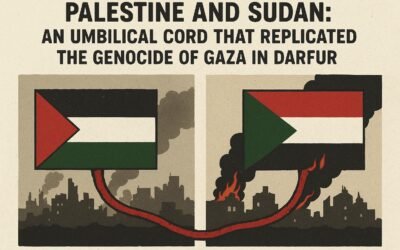The ‘Norway of Arabia’ Quietly Rules the Strait of Hormuz—Here’s Why No One Dares Challenge It
Oman’s Historical Legacy: Treaties and Terrain
1. From Ancient Traders to Treaty Architects
Oman’s dominance of the strait began over 2,000 years ago, when its sailors monopolized trade between Mesopotamia and India. By the 16th century, Oman’s navy expelled Portuguese colonizers from Hormuz Island, cementing its role as gatekeeper. But it was modern treaties that locked in its authority: 1975 Iran-Oman Maritime Boundary Agreement: Divided the strait’s seabed, granting Oman sovereignty over Musandam’s waters and defusing Iranian territorial claims. 1999 UAE-Oman Border Treaty: Resolved disputes over the Musandam exclave, securing Oman’s uninterrupted coastline. 2003 UAE-Oman Maritime Pact: Clarified fishing and naval rights, ensuring Oman’s control of the strait’s narrowest 21-mile chokehold.
2. Musandam Peninsula: Nature’s Fortress
Dubbed the “Norway of Arabia” for its fjords and cliffs, Musandam’s geography is Oman’s ultimate weapon. The Yaruba dynasty (17th century) built watchtowers on its peaks to spot invaders, while today, radar systems monitor every tanker. The peninsula’s isolation—separated from Oman by UAE territory—makes it a natural fortress, shielded from land-based threats.
3. Sultan Qaboos: The Modern Strategist
When Sultan Qaboos took power in 1970, he inherited a fractured nation. His first act? Signing the 1980 U.S.-Oman Access Agreement, allowing American warships to dock in Omani ports in exchange for security guarantees. This Cold War pact, renewed in 2019, let Oman modernize its navy while keeping Hormuz open during the Iran-Iraq War and Gulf crises.
Geopolitical Significance: How Oman’s Treaties Keep the Peace
1. Guardian of Global Energy (Without the Drama)
While Iran threatens blockades, Oman enforces UNCLOS transit rules, ensuring 90% of Gulf oil flows unimpeded. Its 70 km coastline hosts naval bases at Al Khaluf and Bukha, but unlike Iran, Oman avoids provocative drills.
“We don’t take sides; we take responsibility.” — A retired Omani admiral told The National.
2. The Mediator’s Toolkit: Secret Pacts and Backchannels
2015 JCPOA Talks: Oman hosted 18 months of clandestine U.S.-Iran meetings in Muscat, leveraging its 1975 maritime treaty with Iran as a trust-building tool. 2021 Saudi-Omani Border Deal: By settling a 52-year border dispute, Oman reduced Saudi-Iran proxy tensions near the strait. 2023 Oman-Iran Security Draft: A pending pact to combat drug smuggling (a key Hormuz issue) signals deeper cooperation—without aligning against the West.
3. The Duqm Doctrine: Beyond Hormuz
Fearing overreliance on the strait, Oman built the $5 billion Port of Duqm—outside Hormuz—with a 2019 UK pact granting the Royal Navy docking rights. The Oman-India Pipeline, a proposed underwater gas link, aims to bypass the strait entirely.
“Duqm is our insurance policy.” — An Omani energy minister, 2022.
Why No One Challenges Oman’s Rule
- Neutrality as a Weapon: By refusing to join anti-Iran alliances (unlike Saudi Arabia or the UAE), Oman avoids becoming a target. Even Iran’s IRGC Navy avoids Omani waters. 2. Treaty Tetris: Oman’s web of agreements—with Iran, the U.S., India, and the GCC—makes attacking Musandam an act against every major power. 3. The “Good Cop” of Hormuz: While Iran plays villain, Oman’s cooperation with the U.S. Fifth Fleet (joint anti-piracy patrols) keeps Western powers invested in its sovereignty.
The Future: Oman’s Quiet Power Play
Green Hydrogen Hub: A 2020 treaty with the EU and Japan aims to make Oman a post-oil energy supplier via solar-powered hydrogen plants—reducing Hormuz’s leverage. AI Surveillance: Oman’s 2023 pact with Huawei installs smart sensors along Musandam, tracking ships in real time.
The Art of Silent Control
Oman’s rule over the Strait of Hormuz isn’t about warships or threats—it’s about treaties drafted in air-conditioned rooms and fjords carved by millennia. By playing mediator, modernizer, and gatekeeper, this “Norway of Arabia” ensures that even as global rivals rage, the oil keeps flowing.
And that’s why, in a region of shouters, Oman’s silence speaks loudest.




